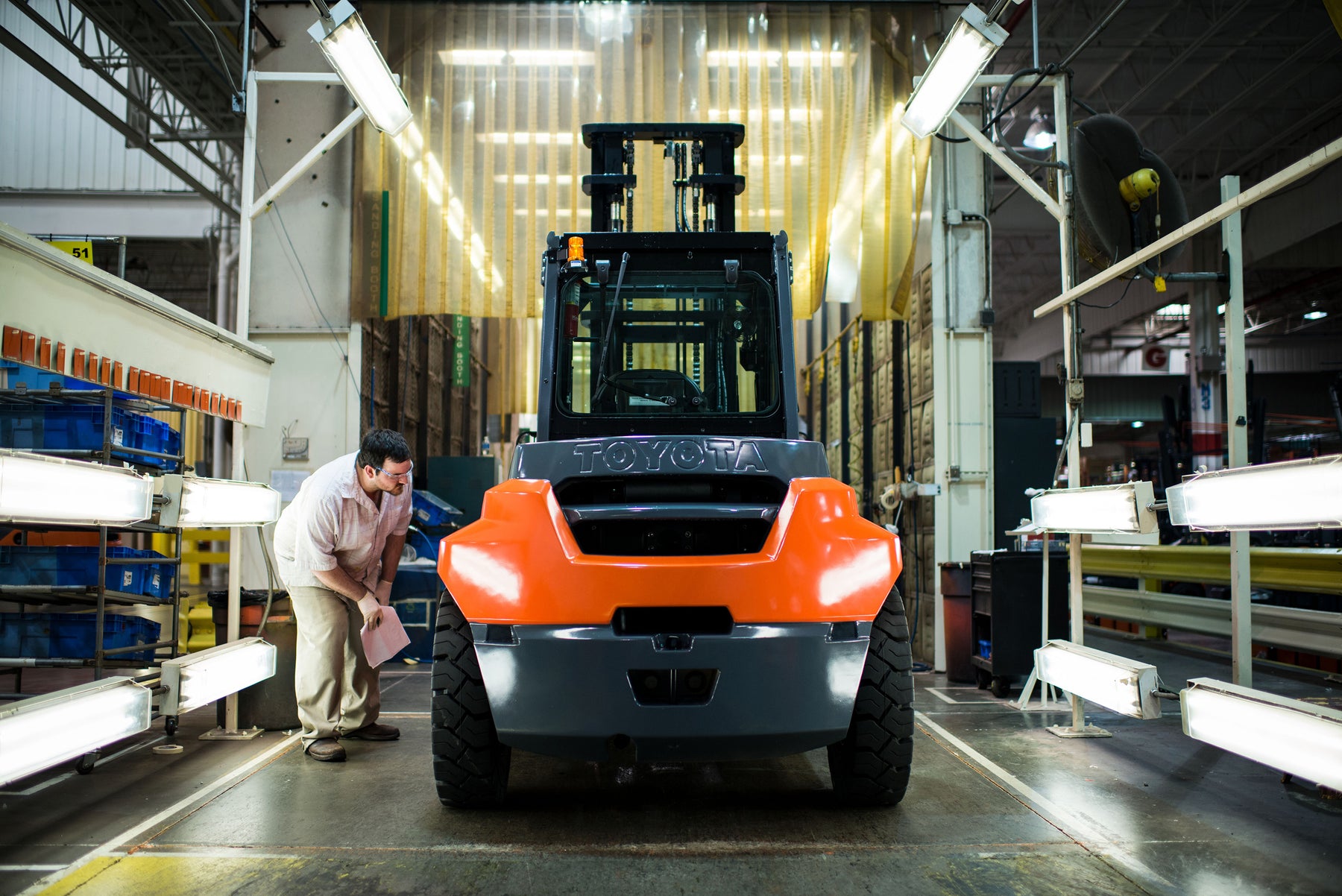
Using a Forklift Checklist To Improve Safety
The Canadian Centre for Occupational Health and Safety (CCOHS) recommends using a forklift checklist to help operators and managers keep their safety programs on track. If you’re already using a checklist to control your equipment use, compare your listed items with those presented by the CCOHS. And if you aren’t yet relying on a checklist, consider adapting the one below to your needs and making this list an easy and mandatory part of your team’s daily routine. The CCOHS list is divided into two distinct categories: a visual inspection and a check for operational anomalies.
Visual Inspection
- General condition: Check the forklift for obvious problems or missing components.
- Check the floor and work area for obstacles and hazards.
- Look for overhead obstructions that might interfere with the overhead guard.
- Confirm the presence of a charged, working fire extinguisher.
- Check fluid levels for oil, radiator fluid and fuel.
- Check the battery and cable for a charge and tight connections.
- Check the wheels and tires for damage and proper air pressure.
- Check the mast, backrest, and rollers for damage and visible problems.
- Check all chain anchor pins.
- Look for fluid leaks and damp spots or puddles on the ground.
- Look for wear, damage and leaks in the hose lines.
- Make sure capacity labelling is clear.
- Clean the air filter intake.
- Make sure the propane tank is secure and tight.
Operational Check
- Listen to the engine: Check for odd sounds, roughness and leaks.
- Make sure all gauges are working properly.
- Check the horn for function and volume.
- Check all headlights and warning lights.
- Make sure seatbelts are in good condition.
- Make sure the steering mechanism is in good condition.
- Check the tilt and side shift mechanism.
- Make sure both foot brakes and parking brakes are in good condition.
Make this checklist available to all forklift and lifting equipment operators, and be sure to provide space below the list to enter detailed comments about any out-of-place findings, damage, or other concerns. A practical, easy-to-use caddy can keep your checklist readily available and within reach, which can help make the review process part of every operator’s daily routine. Liftow offers inspection checklists for a variety of material handling equipment, including propane and electric counterbalance forklifts, electric narrow aisle forklifts, pallet trucks and aerial work platforms.

